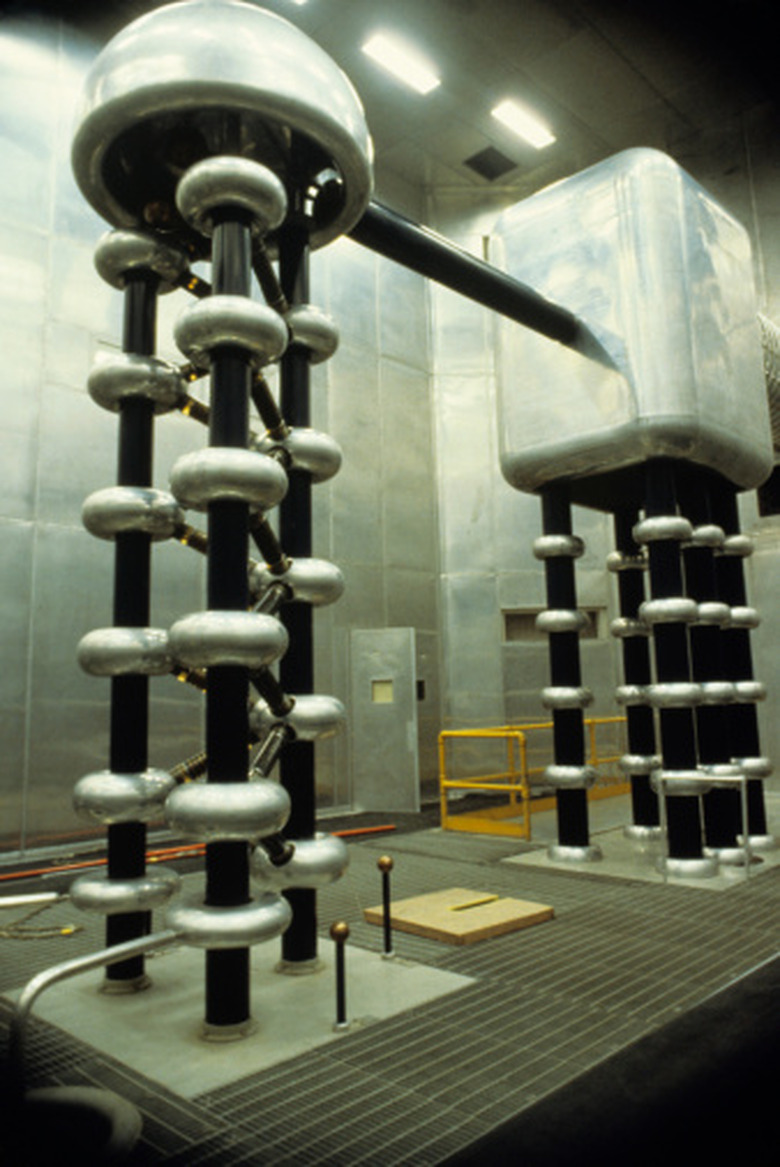Protons, Neutrons & Electrons Science Projects
You and all the objects around you are made of atoms. These atoms in turn are made of protons, neutrons and electrons, three different kinds of subatomic particles. Protons and neutrons are confined to the nucleus, while the electrons form a shifting cloud of negative charge around it. Some classes in school may require you to construct projects that demonstrate your understanding of atoms and subatomic particles. Here are a few ideas.
Considerations
Considerations
It's important to keep your teacher's expectations in mind while working on this project, because much of what we know about atoms is very difficult to represent in model form. An electron behaves both like a wave and like a particle, so we can't be certain about both its momentum and position at the same time. Moreover, electrons around a nucleus behave more like a fast-moving cloud than a solar system. Given the modern understanding of atoms, if you made a model of an atom with small balls intended to represent electrons and positioned them at specific points around the nucleus, your model would be incorrect. It may be, however, that your teacher wants you to make a model like a mini-solar-system — and if so, even though that kind of model is scientifically inaccurate, for the purposes of your class it's what you ought to do.
Drawings
Drawings
If your project permits or requires you to submit drawings, you can draw pictures of atomic orbitals. These are regions where you have a high probability of finding an electron for a specified energy level. The link under the Resources section will show you the basic shape of each type of orbital. For elements in the first three rows of the periodic table, all you need are s and p orbitals. Hydrogen and helium only have a 1s orbital, while the next two rows have a 2s or 3s orbital plus three additional p orbitals. Alternatively, you can represent the electrons as a big fuzzy cloud with a small tiny point in the center to represent the nucleus.
Research Projects
Research Projects
If your teacher asks you to do a research project, you can read up on the history of atoms. The way scientists think about atoms has changed a great deal over the last century and a half. It would be a good idea to mention Dalton's theory of the atom, J. J. Thomson's model of the atom and Bohr's model of the atom, since each of these was a landmark in the history of atomic theory. The second link under the Resources section explains the background for each of these and will give you a place to get started.
Models
Models
If you want to build a model of an atom, take small rubber balls, beads or pieces of candy like jellybeans, then glue them together so they form a ball. This ball will represent the nucleus. Next, attach cotton wool to represent the electron cloud around the nucleus. Add a little glitter to the cotton to show that the electrons are constantly moving and we're not really sure about their location — we just know where they probably are. Embed the "nucleus" in a half-sphere of cotton wool; this will represent a cut-out of half of the atom. It's not perfect, because there isn't really a good way to represent how an electron actually behaves using a model, but it works.
Alternatively, try gluing candy or small rocks together to represent the protons and neutrons in the nucleus, then bend pieces of wire so they form loops. Stick styrofoam balls onto these pieces of wire to represent the electrons, then hang the nucleus inside the "cage" formed by these loops of wire using pieces of string. This is not an accurate model of the atom, but at one point in history people thought that atoms were like miniature solar systems, so some classes may still want you to build this kind of model.
Cite This Article
MLA
Brennan, John. "Protons, Neutrons & Electrons Science Projects" sciencing.com, https://www.sciencing.com/protons-neutrons-electrons-science-projects-8250086/. 24 April 2017.
APA
Brennan, John. (2017, April 24). Protons, Neutrons & Electrons Science Projects. sciencing.com. Retrieved from https://www.sciencing.com/protons-neutrons-electrons-science-projects-8250086/
Chicago
Brennan, John. Protons, Neutrons & Electrons Science Projects last modified August 30, 2022. https://www.sciencing.com/protons-neutrons-electrons-science-projects-8250086/
